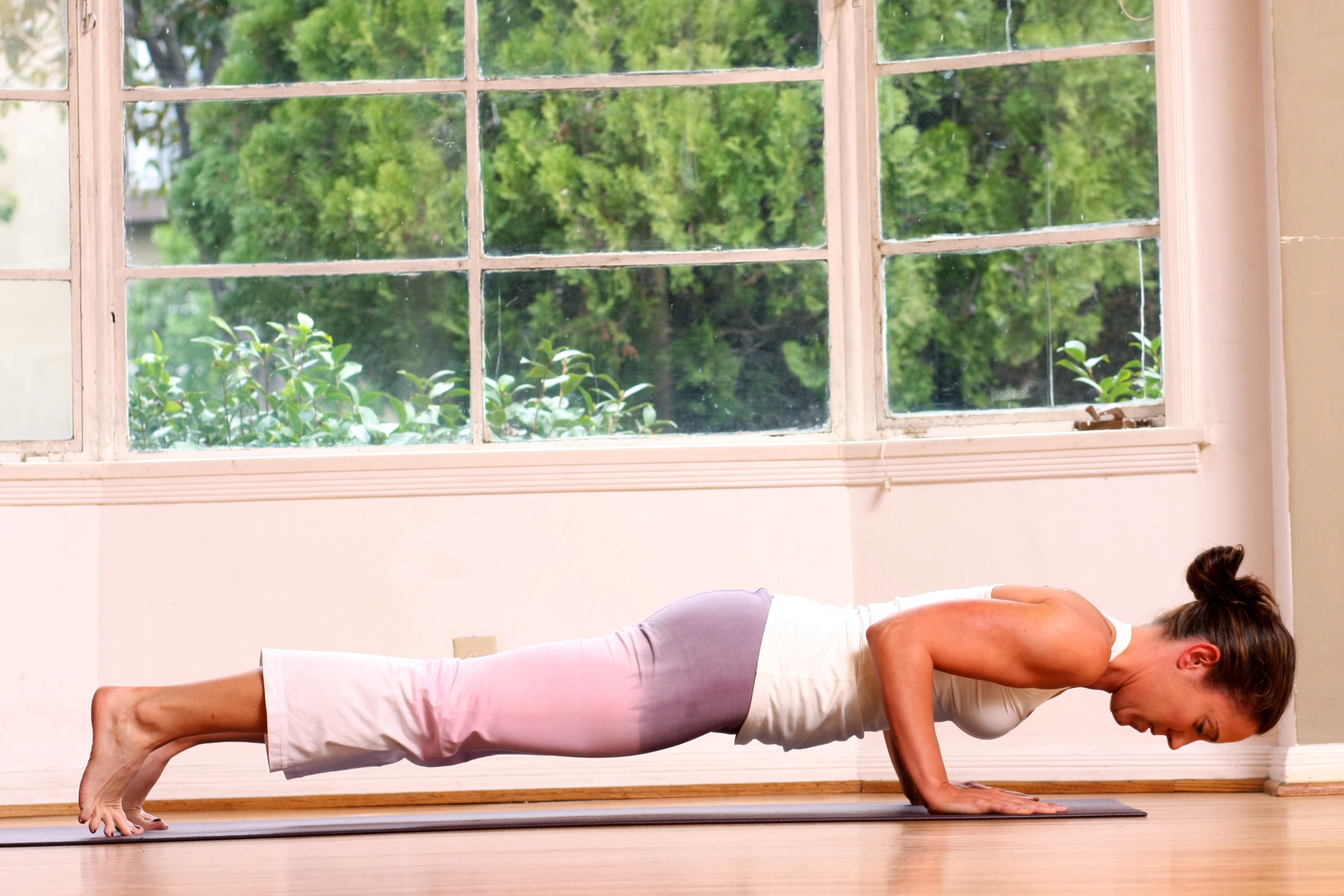Chaturanga Dandasana for beginners: How to do it
Chaturanga is practiced quite often in a vinyasa yoga class yet so many have difficulties with the posture. Here is what helped me.
I’ll never forget the first yoga class I took about 14 years ago in Los Angeles. The teacher went into her Hitler voice every time she called out this pose and for added terror, I wasn’t even sure what the pose was. Often called, “the yoga push-up” or “low plank”, the chaturanga is practiced in most vinyasa classes as part of the sun salutation, or “flow” portion of class.. To avoid injury, it’s best not to sacrifice form when practicing this pose.
How to correctly practice Chaturanga
Begin in downward facing dog and take a few breaths. Then on a long exhale, begin to shift your weight forward into plank pose so the shoulders are directly over the wrists. Press into the toes, draw the belly in, and pull the inner armpits towards one another. Drop your chin for a long neck and keep a straight line from your head to your tailbone. Take a deep breath in, and as you exhale, hug the upper arms & elbows in towards your ribs and lower half way down in one straight line (arms should form a 90 degree angle). Keep the shoulders away from the ears and continue to pull the belly button towards the spine. Refrain from doing any wacky, ripple-like, 1980’s snake moves with your back and instead imagine you had a glass of water in the center of your back that you didn’t want to tip.
Chaturanga means “having 4 limbs” so it helps to visualize your weight being equally distributed between the balls of your feet and your 2 hands.
Beginners thoughts:
*My arms are not strong enough to perform this strange word you’re speaking and I’m crashing onto my belly.
Chaturanga is strong on the shoulders and triceps making it a very challenging posture, but the good news is, in the midst of strengthening the body, there are modifications you can take. I always have my students come down into their knees or on top of a bolster to really nail the alignment and keep the shoulders in line with the wrists.
Be sure to use the legs and core muscles as well so you can take some of the weight out of the arms and wrists.
* I’m getting kinda tired, but I’m doing these anyway because the teacher said to and I don’t want to look like a beginner.
Doing too many vinyasas can absolutely cause injury as the muscles and joints get more and more fatigued. When this happens, your best bet when your teacher calls for a “vinyasa” is to skip right to your downward facing dog or childs pose and join in with the postures when you renew your energy. True yogis rest when they need to.
Common mistakes even non-beginners make:
*Coming down lower is better, right?
An all too common mistake when coming down into chaturanga is letting the belly sink down to far. The correct movement is to only lower half way down (to the height of the elbows).
*The girl next to me seems to effortlessly be flowing right back to the push up pose which actually looks easier. Shall I give this a try even if I land higher up?
Jump backs that don’t quite make it are a recipe for injury. What do i mean by that? A very common addition to the flow sequence is a "jump back" or jumping back into a chatturanga from a forward fold. The mistake people make is they end up jumping into plank pose instead (about half way there); a big no no for the elbow joints .The key here is not to lock your arms but to bend them so you end up in the low push up instead of plank pose, something that definitely takes many months, (sometimes years) of practice.
PS. Want more inspiration? Be sure to sign up for my free newsletter. Get it here!

